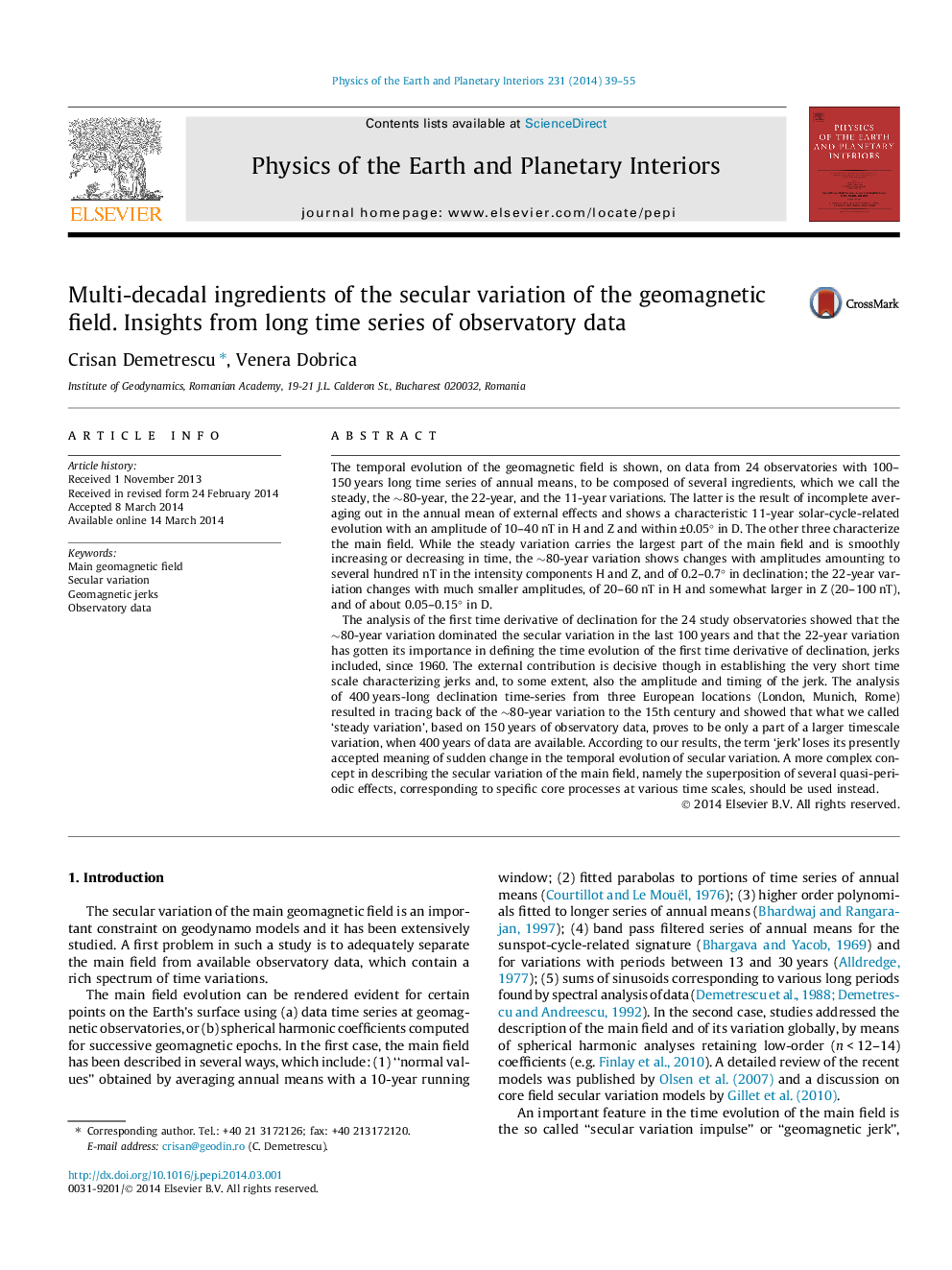| کد مقاله | کد نشریه | سال انتشار | مقاله انگلیسی | نسخه تمام متن |
|---|---|---|---|---|
| 4741529 | 1641510 | 2014 | 17 صفحه PDF | دانلود رایگان |
• Decomposition of the main geomagnetic field variation in multi-decadal ingredients.
• Signals at two time scales (22- and ∼80-year) are relevant.
• Geomagnetic jerks actually result from the combination of two ingredients.
• 11-year external signal significantly contributes to jerks sharp appearance.
• The ∼80-year variation was tracked back to ∼1600.
The temporal evolution of the geomagnetic field is shown, on data from 24 observatories with 100–150 years long time series of annual means, to be composed of several ingredients, which we call the steady, the ∼80-year, the 22-year, and the 11-year variations. The latter is the result of incomplete averaging out in the annual mean of external effects and shows a characteristic 11-year solar-cycle-related evolution with an amplitude of 10–40 nT in H and Z and within ±0.05° in D. The other three characterize the main field. While the steady variation carries the largest part of the main field and is smoothly increasing or decreasing in time, the ∼80-year variation shows changes with amplitudes amounting to several hundred nT in the intensity components H and Z, and of 0.2–0.7° in declination; the 22-year variation changes with much smaller amplitudes, of 20–60 nT in H and somewhat larger in Z (20–100 nT), and of about 0.05–0.15° in D.The analysis of the first time derivative of declination for the 24 study observatories showed that the ∼80-year variation dominated the secular variation in the last 100 years and that the 22-year variation has gotten its importance in defining the time evolution of the first time derivative of declination, jerks included, since 1960. The external contribution is decisive though in establishing the very short time scale characterizing jerks and, to some extent, also the amplitude and timing of the jerk. The analysis of 400 years-long declination time-series from three European locations (London, Munich, Rome) resulted in tracing back of the ∼80-year variation to the 15th century and showed that what we called ‘steady variation’, based on 150 years of observatory data, proves to be only a part of a larger timescale variation, when 400 years of data are available. According to our results, the term ‘jerk’ loses its presently accepted meaning of sudden change in the temporal evolution of secular variation. A more complex concept in describing the secular variation of the main field, namely the superposition of several quasi-periodic effects, corresponding to specific core processes at various time scales, should be used instead.
Journal: Physics of the Earth and Planetary Interiors - Volume 231, June 2014, Pages 39–55
